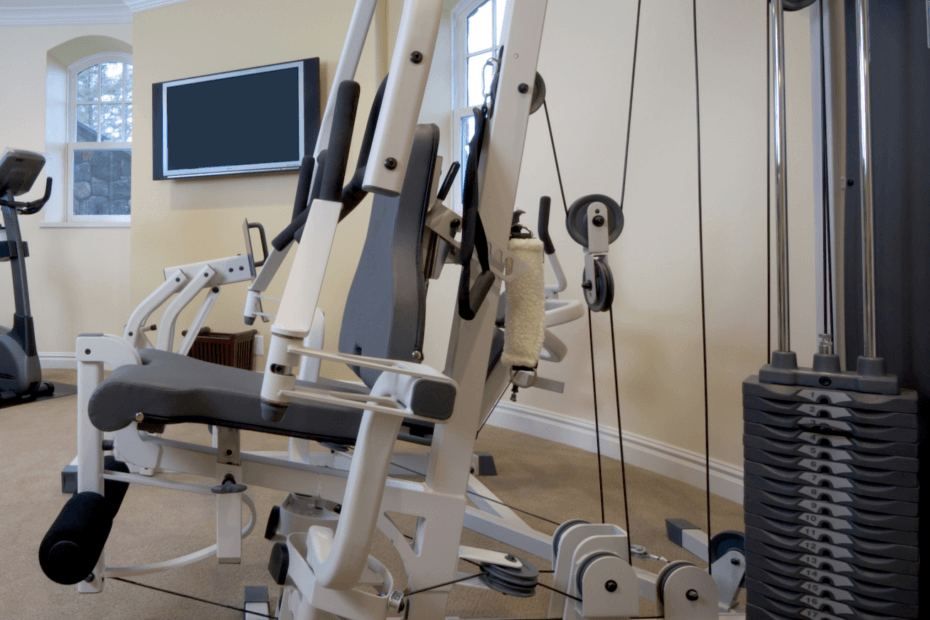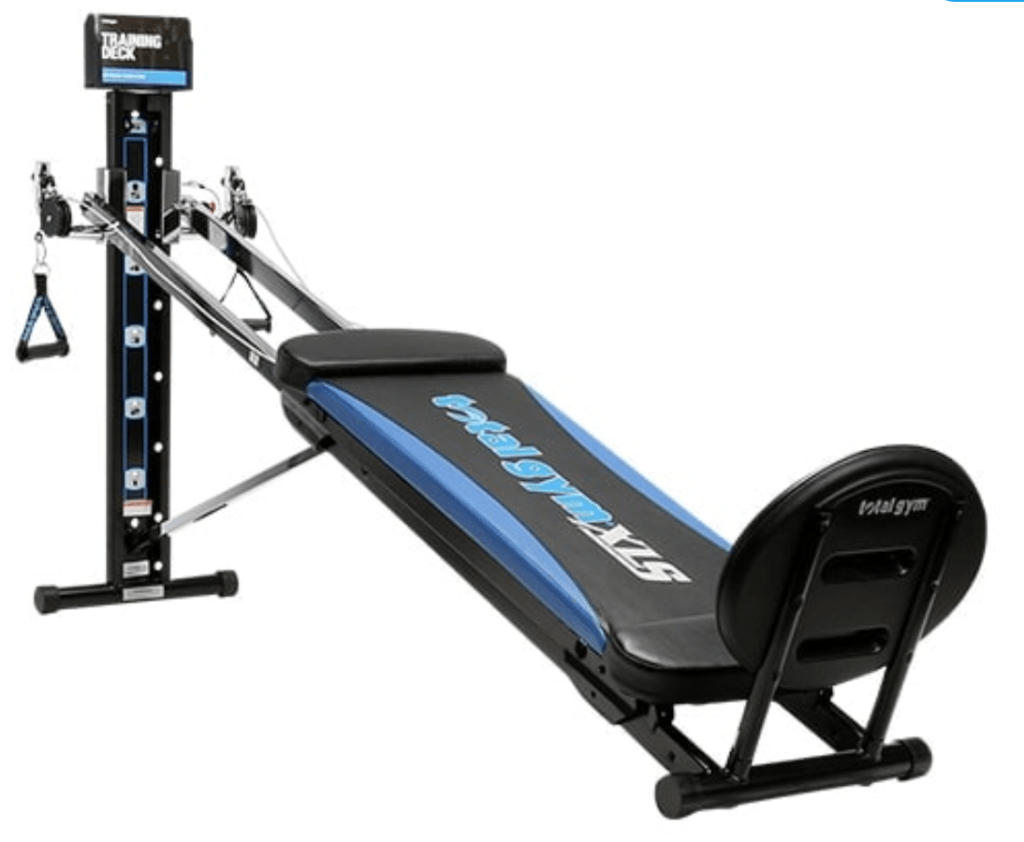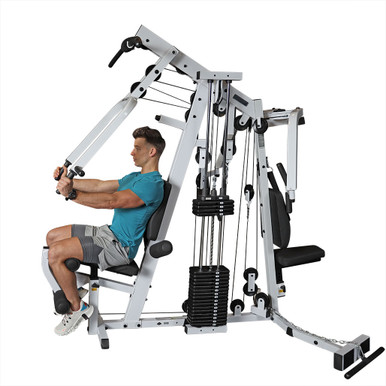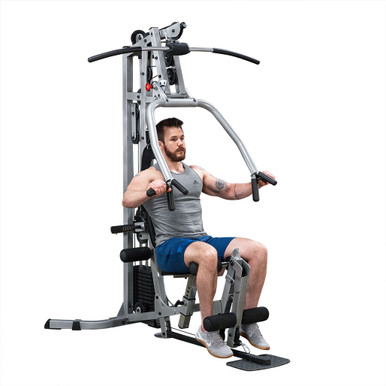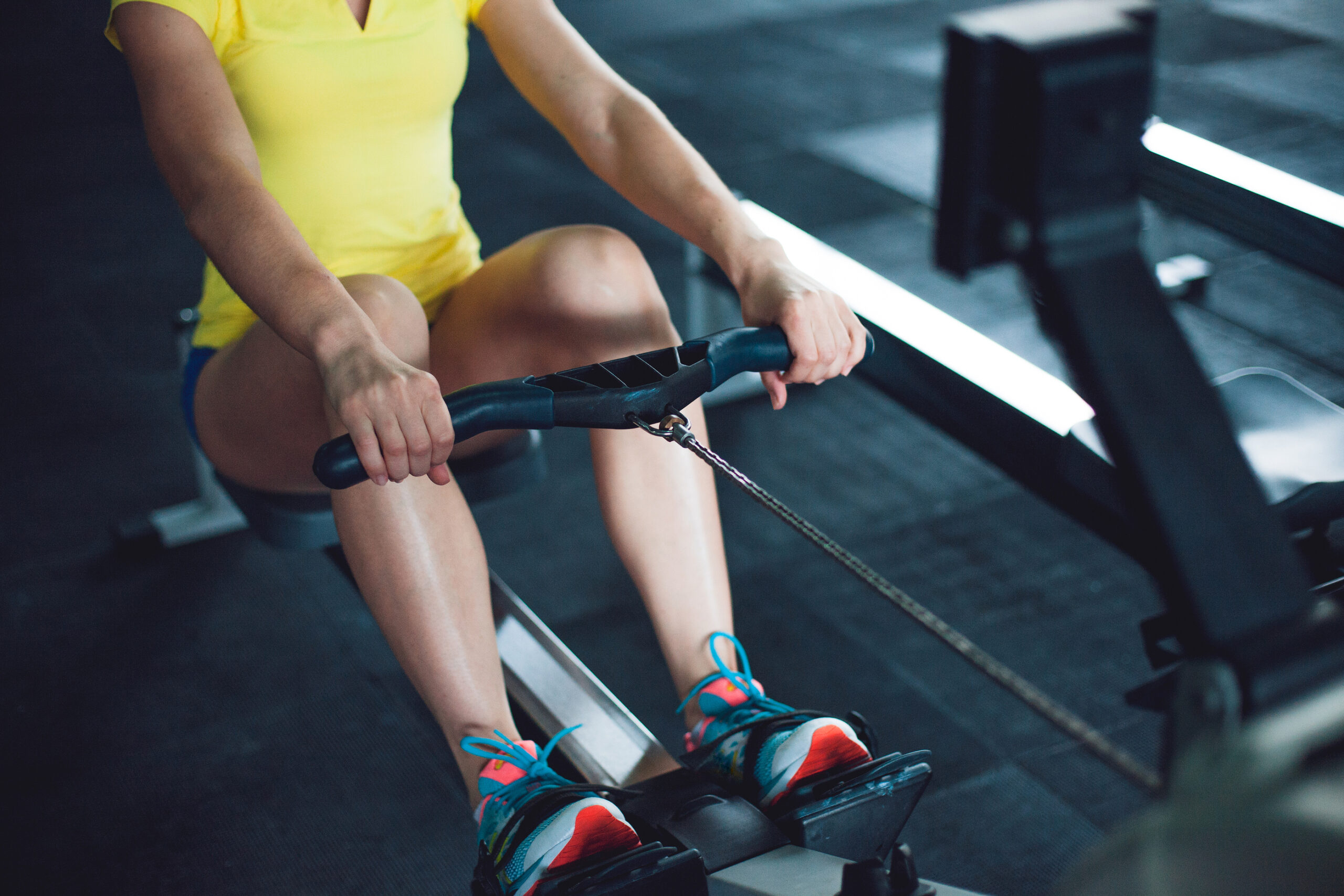Regular exercise not only helps seniors retain their strength, but it also improves independence and overall quality of life.
However, going to a gym or fitness center may not always be practical due to mobility issues, transportation challenges, or busy schedules.
That’s where home gyms come in.
With a home gym, seniors can enjoy the convenience of working out in a safe and comfortable environment whenever they like.
That said, there are all kinds of home gyms out there and some are certainly more senior-friendly than others.
In this comprehensive guide, we’ll review the top home gyms for seniors, but we’ll also go over what seniors and caregivers should look for when searching for the right option (as well as a whole lot more).
After reading, you’ll be well-equipped to find the right equipment to meet your needs.
| Exercise Options | Resistance | Warranty | |
| #1 Total Gym | 60+ | Body-weight | Depends on model |
| #2 Body-Solid EXM2500S | 30+ | 210 lb, 310lb single stack | Lifetime |
| #3 Marcy MWM-990 | 30+ | 150 lb single stack | 2 years |
| #4 Powerline BSG10X | 30+ | 160 lb single stack | 10 years |
| #5 Force USA G6 | Unlimited | Weight plates, dual 220 lb stacks, body-weight | Lifetime frame 10 year parts |
The Benefits of Strength Training for Seniors
But first, a quick service announcement.
Regardless of your age, you should try to include some form of strength training into your routine.
This could be using a home gym, doing bodyweight exercises, using dumbbells or resistance bands, or simply exercising with cans of soup.
It doesn’t matter what kind of resistance you use, as long as you’re doing something to help build strength and improve muscle mass as you age.
Strength training is paramount because we all lose muscle mass and strength as we age (this natural loss of muscle is known as sarcopenia), which inevitably affects our abilities to function in day to day life.
As a physical therapist, I deal with this everyday with my patients.
I see patients within a wide range of fitness levels and diagnoses, but I include strength training exercises in one form or another with just about every person I work.
And that’s because being stronger makes everything easier.
From getting up out of a chair and walking to feeling more balanced on your feet, being stronger is always a good thing.
Listing all the physical and mental benefits that come with strength training would take way too long, but here’s a quick glance at some of them:
- Improved Muscle Mass and Strength: Counteracts sarcopenia, enhancing mobility and independence.
- Bone Health: Weight-bearing exercises increase bone density, reducing the risk of osteoporosis and fractures.
- Balance and Coordination: Strengthening muscles improves stability, reducing the likelihood of falls.
- Metabolic Health: Helps manage weight, improves insulin sensitivity, and supports overall metabolic function.
- Mental Well-being: Exercise releases endorphins, boosts mood, and can alleviate symptoms of depression and anxiety.
Anyway, if you’re reading this, I’m probably preaching to the choir, but I’m just passionate about continued exercise as we age because it can make sure a huge difference.
Now, without further ado, let’s get to the good stuff.
The 5 Best Home Gyms for Seniors
1. Total Gym(s)
Pros
- Low-impact
- Tons of exercise options
- No assembly
- Easy to use
- Lots of models to choose from
Cons
- Takes up a lot of space when in use
- Have to be careful getting on/off
The Total Gym has been around for a long time and all of their models have always been great for seniors – we even used to use one in the therapy clinic I used to work at.
Total Gyms are senior-friendly because they’re incredibly low-impact, there’s no chance of dropping a weight or smooshing fingers, they’re pretty easy to use, and there’s no assembly.
As mentioned, there are tons of different models and they all vary a bit with regards to the number of resistance levels they have and the type of accessories they include.
But all Total Gyms work the same.
They all have a slide board that you sit or lie on and they all have a set of pulleys that you use to perform the varying exercises.
Your bodyweight acts as the resistance, which can be increased or decreased by adjusting the angle of the slide board.
Speaking of exercises, these gyms are versatile – depending on the accessories you have, you can perform anywhere from 60 – 80+ different exercises with a single machine.
This makes it easy to get a full body workout in without having to purchase multiple pieces of equipment.
When comparing Total Gyms, look for the number of resistance levels they come with because this is a big difference between the models.
Having more resistance levels is a good thing because it allows you to make smaller adjustments to your workouts, but the max resistance setting is pretty similar across all models.
Personally, I think the Total Gym Apex 3 would make a great gym for seniors because it’s affordable, comes with 8 resistance levels, and includes all the most popular attachments.
Seniors looking for a heavier-duty, more comfy slide board might also want to consider the classic Total Gym XLS, although it only comes with 6 resistance levels.
The biggest downside to these Total Gyms is that they do take up a fair amount of floor space – at roughly 90″ long, you need at least 8′ of floor to use these gyms.
But when it comes to low-impact, versatile home gyms, it’s going to be hard to find a better option.
2. Body-Solid EXM2500S
Pros
- Versatile gym
- Lots of resistance
- Safe to use
- Optional leg press
- Lifetime warranty
Cons
- Takes up a lot of space
- Assembly a bit challenging
Seniors looking for a more traditional, weight stack home gym will likely prefer Body-Solid’s EXM2500S.
Body-Solid is one of the most trusted names in home gym machines and this happens to be one of their most popular models.
And it’s not that hard to see why.
The EXM2500S comes with all the stations you’d expect, plus a few extra bonuses for added versatility.
For starters, this gym comes with separate chest press and pec fly stations, including an upper pulley for lat pull downs and a lower pulley for moves like low rows, bicep curls, ham curls, etc.
There’s also a middle pulley that can be used for resisted ab crunches, rear delt flys, and whatever other exercise you may want to perform from that position.
There’s also a leg developer (for leg extensions and ham curls), as well as the option to add an additional leg press accessory for even more options.
In terms of resistance, the EXM2500S comes standard with a 210 lb weight stack, but it can be upgraded up to 310 lb for seniors who want even more room for growth.
All of this sounds great, but what really makes this gym great for seniors is the fact that you don’t have to worry about managing weights or using a spotter.
With an integrated weight stack, the EXM2500S is a very safe gym.
And of course Body-Solid’s lifetime warranty never hurts either.
The biggest downside to this gym is most likely it’s size – it takes up a pretty big chunk of floor space (85″ x 61″) and it’s heavy.
So it won’t be easy to move if you ever want to change its position in your home.
But if you’re looking for a quality, versatile gym that’s safe for seniors, the EXM2500S is a smart choice.
3. Marcy 150 lb Weight Stack (MWM-990)
Pros
- Compact
- Easy to use
- Access to 30+ exercises
- Preacher curl pad, lat pulldown bar included
- Great price
Cons
- Warranty on the short side
- Could be a bit small for larger users
Marcy has become a top provider of affordable home gym machines and they have several variations of the single weight-stack gym to choose from.
I like the MWM-990 because it comes with a detachable preacher curl pad and an included lat pulldown bar.
The color scheme is pretty sharp too though.
Anyway, this gym is a bit simpler than the one just mentioned, but it still comes with all of the basics, allowing seniors to safely perform upwards of 30 different exercises.
In the center, you have the chest press station that doubles as a pec fly station, allowing some nice variety for working the chest.
There’s also an upper pulley for lat pulldowns, tricep push downs, and any other moves you prefer from that high position.
There’s also a lower pulley station for low rows, hip exercises (ankle strap included), etc.
As mention, Marcy includes a preacher curl station to hit the biceps, as well as a leg developer.
There’s no middle pulley on this gym, but its compact size allows it to fit in smaller homes.
And as the name probably suggests, this gym comes with a single, 150 lb integrated weight stack that’s to be used with all exercises.
Marcy covers this gym with a 2 year warranty, which isn’t super long, but given how affordable this gym is, it’s not that bad.
Overall, I could see the MWM-990 being a great choice for seniors looking for a simple, affordable single stack gym that’s well-built.
4. Powerline BSG10X
Pros
- Compact
- Upper, lower, and middle pulleys
- Lat bar, low row bar, and ab harness included
- Leg press compatible
- Good warranty
- Straightforward assembly
Cons
- Little pricey for a single stack gym
Powerline’s BSG10X is another pretty straightforward, single stack home gym system, but I like that it’s compatible with an optional leg press attachment and that it comes with an additional middle pulley.
It’s also backed by a longer warranty (10 years) and is compact for this kind of gym.
The BSG10X comes with a built-in 160 lb weight stack that’s easy to adjust, allowing a decent amount of resistance for each exercise.
This gym comes with an adjustable angle chest press, allowing you to perform incline presses at various angles, but also standing shoulder press as well.
The upper and lower pulleys can be used as usual, but there’s also a middle pulley for ab crunches and even more exercise variety.
And the BSG10X is compatible with an option leg press attachment, which is always nice.
This gym also includes the lat pulldown bar, the ab harness, and a low row bar, giving just about everyhting you need to start exercising right out of the box.
Speaking of which, assembly for this gym is pretty straightforward too.
The BSG10 is a little expensive for a single stack gym, but considering the attachments it comes, the warranty, and the quality, I wouldn’t necessarily say it’s over-priced.
Overall, I think this gym could make a good choice for seniors looking for a single stack gym that offers a lot of exercise variety and like the idea of a longer warranty.
5. Force USA G6
Pros
- Combines power rack, Smith machine, and functional trainer
- Unlimited exercise variety
- Comes with a ton of attachments
- Relatively compact
- Great warranty
Cons
- A little pricey
- Challenging assembly
So far, we’ve looked at some nice low-impact, single stack gyms and the Total Gyms which use your bodyweight as resistance.
These are great for seniors, but some seniors might want the option to do more traditional strength training moves like squats, bench press, cable crossovers, and whatnot.
In these cases, an all-in-one trainer could be a good fit.
And when it comes to these all-in-one gyms, Force USA is as good as it gets.
I actually own Force USA’s X15 Pro myself and I couldn’t be happier.
Anyway, Force has a lot of gyms to choose from, but their G6 is compact and designed to fit into corners, making it more approachable for homes with limited workout space.
As an all-in-one trainer, the G6 combines the functions of a power rack, a Smith machine, and a functional trainer (dual, adjustable pulleys).
This means there really isn’t any exercise you can’t do with this system – especially when you take into account all the attachments that come with these gyms.
The functional trainer comes with 2x 220 lb weight stacks, giving folks as much resistance as they’d ever want.
And the Smith bar can safely hold up to 772 lb, so it should be able to handle even the strongest seniors out there.
The G6 comes with most of the handles, J-bars, and attachments you need to get rolling right out of the box, but it doesn’t come with a barbell or weight plates, so you’d have to purchase these separately.
Force also covers this gym with a great warranty – lifetime frame, 10 year parts.
Overall, this is a great gym with pretty much unlimited workout options, but it’s not cheap. It’s also not the easiest gym to assemble.
But if you’re looking for a home gym that can handle serious weight lifting, it’s a great choice.
Features Seniors Should Consider in a Home Gym
It’s not easy compiling a list like this because there are just so many different kinds and styles of home gyms out there.
And we don’t want to assume that all seniors are looking for the same thing because that’s not true.
That said, there are some essential specs and features we should all consider when trying to choose the right home gym, especially if seniors will be using it.
Type of Home Gym
If you know what kind of home gym you’re looking for, it can instantly help you focus your search.
Home gyms come in a lot of styles and any of them can work well for seniors, but the kind that’ll work best for you ultimately depends on your mobility level, your experience with exercise, and what your goals are.
Here’s a quick rundown on the most common types of home gyms:
- Single stack gyms- these are the quintessential home gym machines a lot of us likely picture when we think of home gyms. These machines come with a single stack of weight plates for the resistance and usually come with an upper, lower, and sometimes middle pulleys. These are usually compact, easy to use, and very safe for seniors.
- Functional trainers- these gyms include 2x weight stacks and 2x adjustable pulleys, allowing you to perform a wide range of strengthening exercises. They tend to take up more space and usually don’t include a seat or bench.
- All-in-one trainers- these home gyms combine a power rack, a Smith machine, and a functional trainer into a single piece of equipment. These gyms allow you to perform exercises with barbells and weight plates, as well as more controlled exercises with the adjustable pulleys and integrated weight stacks. These tend to be larger and more expensive, but can be great investments for seniors who are experience with weight training.
- Bodyweight gyms- these gyms use your bodyweight as the resistance and a set of pulleys to offer tons of workout variety. These gyms are very low-impact and easy to assemble, making them great choices for seniors (example: Total Gym).
- Suspension trainers- these “gyms” are as minimalistic as they come, consisting of just a strap and a few handles. By attaching one end to a doorway or anchor point and using your bodyweight as the resistance, you can perform a wide range of exercises (example: TRX).
Safety
Regardless of which type of gym you go with, the first priority is always safety.
The goal is to find a home gym that seniors can access safely, including getting in/out of it, adjusting the resistance levels, and making adjustments as needed between exercises.
Seniors with significant mobility deficits may prefer single stack gyms as they are often easier to access, although other types of gym can work well too if spotters are available to assist.
Exercise Variety
Seniors and caregivers should look for a home gym that offers a nice variety of available exercises to perform.
After all, the goal should be a full body workout, exercising the arms, legs, and core if possible.
Some gyms offer more exercise options than others, but try to aim for one that can work all major muscle groups safely.
Warranty
It’s always a good idea to consider a gym’s warranty too before purchasing.
A longer warranty is always preferred, but keep in mind that length of warranty usually coincides with price (more expensive gyms tend to come with longer warranties and vice-versa).
The type of gym may effect the length of the warranty as well.
Assembly and Maintenance
Keep in mind that most home gyms do require some assembly, so if you live alone or don’t have any handy caregivers to assist, this is something that could play a big role in the decision making process.
Gyms with weight stacks and pulleys require cables – and these gyms do require a bit more assembly than others.
You can always pay for professional assembly too of course, although keep this in mind when budgeting.
Price
Speaking of which, price will certainly play a big role in helping you choose a home gym.
We have to find a gym that fits our budget, but luckily, home gyms come in all price ranges.
You can get a decent single stack system for around $500 or a light-weight Total Gym for even less.
And on the other hand, you can easily drop $5000+ on a high-end all-in-one trainer.
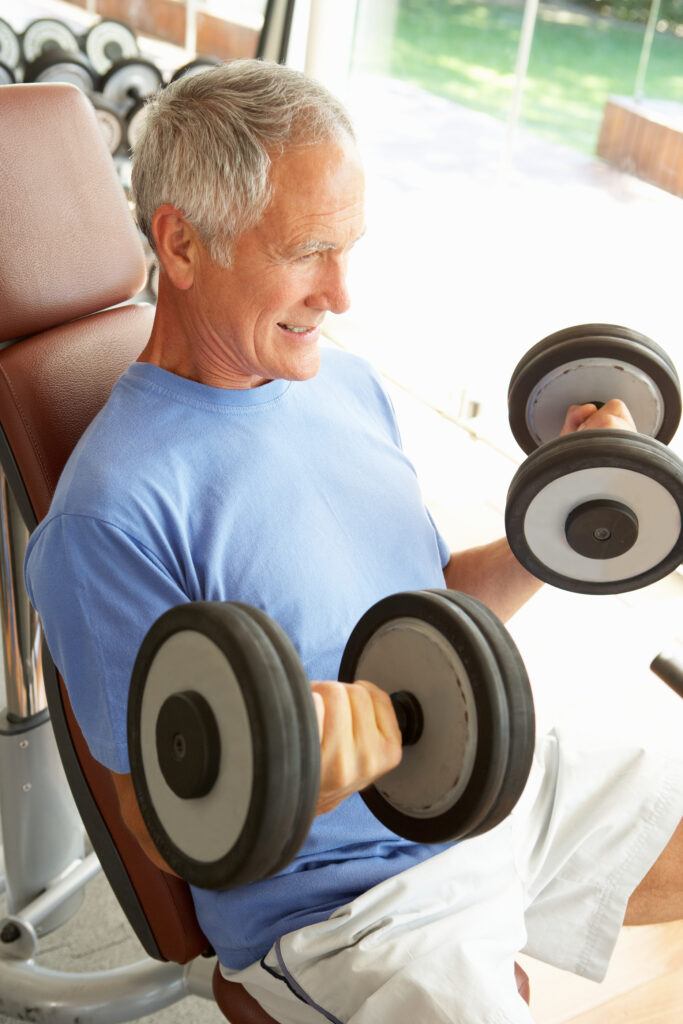
Safety Considerations for Seniors Using Home Gyms
Safety should always be a top priority, especially for seniors new to exercise.
Here are some key precautions seniors and caregivers may want to consider before making a purchase:
- Consult with a Healthcare Provider: Before starting any new exercise program, get clearance from your doctor, especially if you have pre-existing conditions.
- Warm-Up and Cool Down: Always begin with a gentle warm-up and end with stretching to prevent injury.
- Use Proper Form: Improper technique can lead to injuries. If possible, consult a trainer or watch instructional videos for guidance as needed.
- Start Light: Begin with lower weights or resistance levels and gradually increase as strength improves.
- Ensure a Safe Space: Clear the area around the home gym to prevent tripping hazards.
- Stay Hydrated: Drink water before, during, and after workouts.
- Use a Spotter: if you need assistance getting on/off the gym or are working with free weights, please make sure you have a friend or caregiver available to spot you to reduce risk of injury.
Contraindications to Strength Training for Seniors
While strength training is beneficial and generally safe for healthy seniors, some conditions may require caution or modifications:
- Severe Osteoporosis: Avoid high-impact exercises or heavy weights that may increase fracture risk.
- Uncontrolled High Blood Pressure: Avoid straining or holding your breath during exercises.
- Joint Replacements or Severe Arthritis: Use low-impact machines and avoid movements that exacerbate pain.
- Heart Conditions: High-intensity workouts may need to be avoided; stick to moderate resistance and controlled movements.
- Recent Surgeries or Injuries: Always consult with a healthcare provider or physical therapist for tailored guidance.
Again, when in doubt, contact your physician to make sure it’s safe for you to exercise!
Final Thoughts
Working out from home comes with a ton of advantages and investing in a home gym machine is a great way to get your strength training in.
And these days we’re lucky to have so many quality options to choose from.
Sure, it can get a little overwhelming, but focusing on the important specs and features can help you narrow your search and find the right gym for your home.
It’s also a good idea to consider your goals and be realistic about your physical abilities.
All seniors are different, but generally speaking, a senior-friendly home gym should:
- Offer low-impact exercise
- Offer a full body workout
- Be easy to use
And it should also fit your home and budget.
By understanding the differences between gyms, prioritizing safety, and selecting the right equipment, you can create a safe and effective workout routine tailored to your specific needs.
I hope you found this guide helpful and if you have any questions or know of any great senior-friendly home gyms that deserve a spot on this list, just leave ’em below and I’ll get back to you shortly.
Happy lifting.
